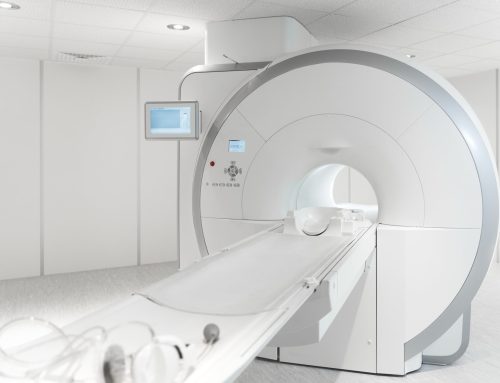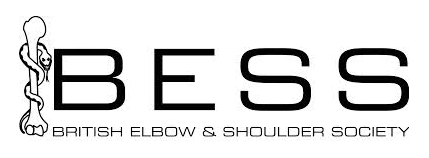Frozen Shoulder during Menopause
Are you a tired, irritable woman over the age of 40? If so, you may be experiencing the symptoms of perimenopause.
Sudden breakouts of hot sweats are the classic signs of menopause, but for most women the changes may be more subtle. Although we normally associate menopause with a woman in her early 50s, it often starts much earlier. Forgetting words, getting frustrated at simple tasks that never used to worry you and a general increase in anxiety levels are recognised symptoms of perimenopause.
Fortunately most women can be treated successfully and quickly with hormone replacement therapy, but it is important to seek advice from a doctor that specialises in this field.
What may come as a surprise is that many women develop musculoskeletal problems and shoulder pain related to the menopause. There are different potential causes of pain, such as:
– Acromioclavicular joint problems.
As a shoulder surgeon, one of the most common problems I see in perimenopausal women is adhesive capsulitis, more commonly known as frozen shoulder.
What is frozen shoulder?
Frozen shoulder is an excruciatingly painful condition associated with reduced mobility and stiffness of the shoulder.
It typically has three phases; freezing, frozen and thawing.
Phase One – Freezing
The cells that line the capsule of the glenohumeral (shoulder) become activated and produce a series of proteins that have different effects. Some proteins trigger inflammation that is painful. Other proteins thicken the shoulder capsule lining, a process known as fibrosis, which limits movement of the joint.
So in phase one the patient experiences pain and stiffness. Simple tasks such as reaching forwards to pick something up or being jolted whilst holding onto a handrail on a bus or train can be exquisitely painful. Everyday tasks such as doing your bra up from behind or trying to zip up a dress or reaching into the back seat of a car, can be agony. Sleep is usually disturbed, and some people wake up several times a night.
Phase Two – Frozen
During this phase, the shoulder pain subsides, but the shoulder movements are still severely restricted. Sometimes the movement is so restricted that it is impossible to lift the arm away from the side of the body.
Phase Three – Thawing
In this phase the movement slowly returns.
Frozen shoulder can get better on its own, but overall it can take months or sometimes in severe cases up to 4-5 years for the symptoms to settle down.
Why is frozen shoulder so common in menopause?
Although it has not been scientifically proven that menopause directly causes frozen shoulder, after listening to countless stories of frozen shoulder in my consulting room, I am convinced that there is a link.
Several hormonal changes naturally occur during menopause. Hormones are chemicals that are made in different parts of the body and are transported in the blood, to cause an effect on cells and tissues in other parts of the body. For example, oestrogen is mainly synthesised in the female ovaries, found in the pelvis, but it has a widespread impact on other parts of the body, including the reproductive tract, heart, breasts and brain. Oestrogen production stimulates secondary sexual characteristics during puberty, including pubic and armpit hair growth. Oestrogen also has a wide range of effects on musculoskeletal tissues, including increasing muscle mass and increasing tendon and ligament laxity.
Oestrogen levels vary during the menstrual cycle; there are two peaks of production in the typical 28-day cycle. During and after menopause, oestrogen levels drop dramatically when a woman stops her periods. Consequently, more than 50% of people who experience menopause also experience joint stiffness as a side effect.
It is relevant to bear in mind that the age at which menopause occurs is typically when musculoskeletal problems are likely to begin, making it difficult to attribute these symptoms to menopause definitely. But women generally are more likely to develop frozen shoulder symptoms than men, and it usually occurs between 40 and 65. So it is highly likely that there is a direct link to the change in hormone production.
Outside of menopause, the risk factors for frozen shoulder include trauma to the shoulder joint such as a fracture, diabetes, thyroid disease, stroke, autoimmune diseases, and periods of prolonged immobilisation.
Other factors to consider
Apart from organic or medical causes, over the years I have observed that there might be a link between frozen shoulder and psychosocial factors. Women in the perimenopausal age group are often experiencing high levels of stress. There are four themes that commonly cause stress in this age group.
- Managing teenage or young adult children
- Caring for elderly parents
- Career stress
- Marital difficulties.
Stress increases the production of cortisol, which, amongst other things, results in disturbed sleep patterns. Not getting good quality sleep further increases stress levels and the symptoms can spiral. In short spurts, cortisol can reduce inflammation; however, the body can adapt to prolonged exposure of increased cortisol, which in turn results in increased inflammation in the body. One of the areas that may be affected is the shoulder, although there is no hard evidence to support this theory at present.
Increased cortisol has a number of other effects including:
– Weight gain
– High blood pressure
– Increased risk of diabetes
– Anxiety and depression.
Adopting a holistic approach to tackling factors to reduce stress levels is an important part of treating frozen shoulder. Interventions such as massage therapy, acupuncture, counselling or coaching should be considered as adjunct therapies to traditional Western medical treatments.
Can you treat frozen shoulder during menopause?
Fortunately, the treatment for frozen shoulder is quite straightforward. Many patients I see have already been to physiotherapy, but have not improved, or the symptoms have worsened as the capsule has become aggravated with movement. Unfortunately, some patients lose faith that physiotherapy works for them. This is not the case, they just need to have an injection first, which reduces the pain in the shoulder, and then go back to physiotherapy so that the exercises will not be so painful. I would recommend seeing a shoulder specialist first to have an MRI scan to exclude any other structural damage to the shoulder.
Hydrodilatation is a highly effective treatment which involves an ultrasound-guided injection to the shoulder joint capsule with a local anaesthetic, hydrocortisone and normal saline (salt water) and is done as an outpatient procedure. This injection usually improves the pain within days, but the movement may take a few weeks to recover.
Physical therapy is essential 4-5 days after the injection to stretch out the capsule to regain movement. Many exercises involving the rotator cuff and shoulder area can help decrease the amount of pain and loss of motion. The joint should be reassessed between 4-6 weeks, and if the pain has not entirely subsided, a second injection may be required to support joint health.
Some patients find acupuncture, or massage therapy useful adjuncts to treatment to reduce the muscle spasm around the shoulder that can cause further pain.
What about surgery for frozen shoulder?
If the symptoms are still present after the second injection, surgery should be considered. In my practice, this is the last resort for treatment and only 3% of patients presenting with frozen shoulder end up needing surgery. This type of surgery can be done with the patient awake, and using regional anaesthesia, by administering an injection in the neck to numb the nerves that supply the arm. Most patients however, opt for a light general anaesthesia as well as they prefer not to be aware of the surgical theatre environment.
The operation itself is a simple day-case procedure and is performed using keyhole surgery, so the scars are tiny. The tight capsule is carefully divided (cut) from inside to free up the shoulder joint. The improvement in the range of movement is immediate, and on the operating table I can move the arm throughout the full range.
Regional anaesthesia means that there is no pain when the patient wakes up. When I see patients in the recovery room, they are often amazed that I can move their arm above their head.
Patients are encouraged to use their arm as much as possible straight away to maintain the movement gained during surgery. Complications are low, and most people are happy with the results. In a few cases the shoulder can start to become stiff again, and in these cases a final injection is done at six weeks, which resolves the symptoms very effectively.
Frozen Shoulder Pain – Final thoughts
Adhesive capsulitis or frozen shoulder is an excruciatingly painful condition associated with stiffness of the joint that affects the performance of simple daily tasks. Sleep is often affected which causes irritability and fatigue that can impact relationships, and eventually lead to depression. The initial treatment with a steroid injection is simple, quick and highly effective. I am often amazed by how long patients are prepared to put up with pain in their shoulder. You do not need to suffer in pain. Book an appointment with me and we can confirm the diagnosis and if planned ahead, can I organise an injection on the same day. After their injection, people often say to me, “That was a miracle! I wish I had done it sooner.”
About the Author
Dr Susan Alexander is a specialist shoulder surgeon with extensive experience in many shoulder-related injuries and chronic pains.
Her work is primarily in minimally invasive shoulder surgery and is supported by 20 years of experience. She would be more than happy to help people suffering from conditions like frozen shoulders if other treatment options have been unsuccessful.
Ms Susan Alexander is a Consultant Orthopaedic Surgeon and President of the Independent Doctors Federation.
She specialises in all shoulder conditions, including frozen shoulder, rotator cuff tears, dislocations and arthritis. Based in London, she practises at Fortius Clinic and King Edward VII’s Hospital. Ms Alexander is highly experienced in minimally invasive (keyhole) shoulder surgery and is known for her meticulous, patient-centred and holistic approach.
She focuses on accurate diagnosis, bespoke treatment planning, and ongoing support throughout recovery. Learn more about Ms Susan Alexander here.










